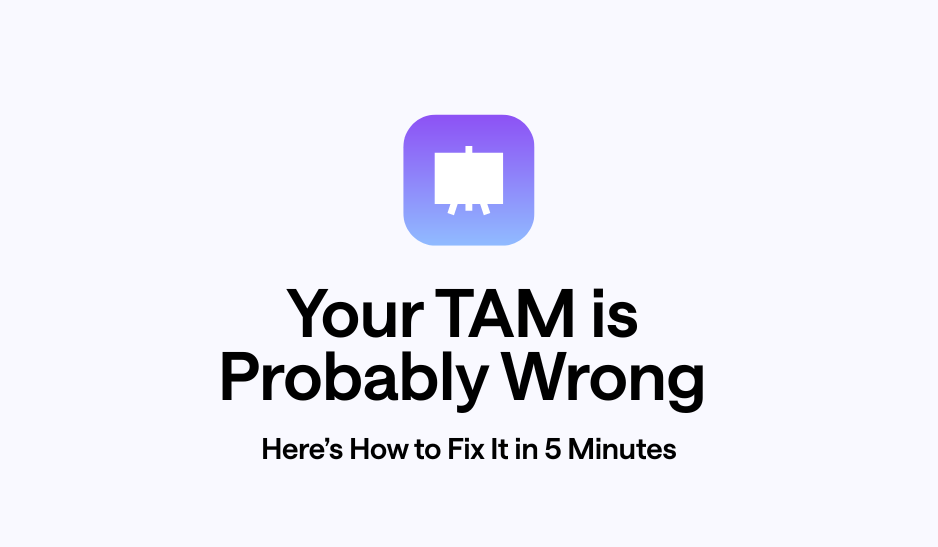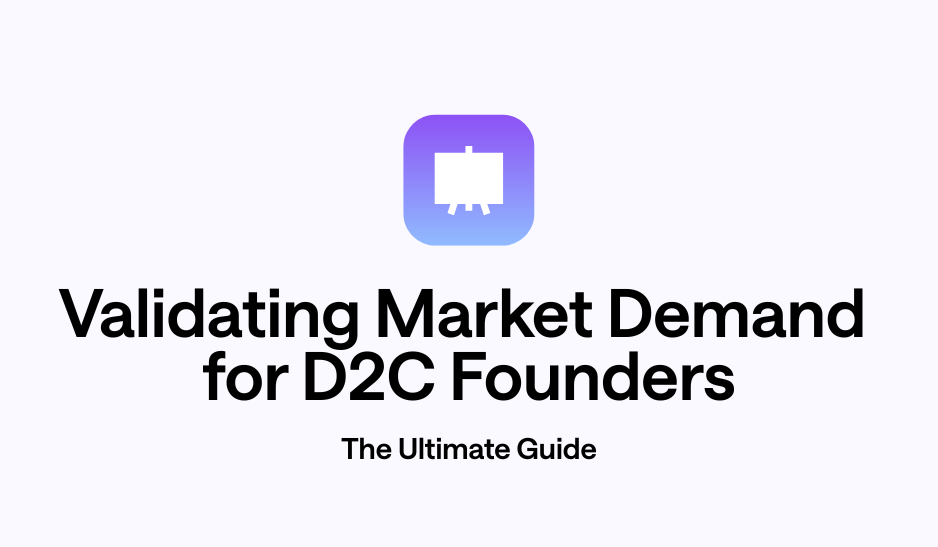How to Find Your Niche (Using Real Data)
Launching a startup begins with a clear vision. But once you have the product, the biggest challenge is often identifying the right audience. Without a well-defined niche, even the best ideas can stall. Too many founders fall back on vague targeting or assumptions. That slows growth, burns budget, and weakens marketing.
In today's environment, you do not need to guess. You can use real data to define and validate your niche before you spend a single dollar on marketing.
The Common (But Flawed) Approach
Most small businesses and founders try to identify their niche by starting broad. They target everyone who might be a fit, then hope to refine over time. This often includes tactics like:
-
Asking friends or colleagues for feedback
-
Running basic surveys without a clear sample
-
Mimicking marketing strategies from larger competitors
-
Using generic audience insights from outdated reports
On the surface, this seems reasonable. You start somewhere and narrow down based on results. But in practice, it creates unclear messaging, inconsistent targeting, and low-quality leads.
Another widespread mistake is copying what large brands are doing. Startups assume that if it works for an established company, it should work for them. But larger companies operate with different resources, recognition, and reach. What succeeds at their scale may fail at yours.
Why That Approach Fails
There are several problems with this trial-and-error model:
1. It wastes budget.
Every ad served to an irrelevant audience is money lost. Targeting too broadly leads to high cost per acquisition and low conversion rates.
2. It delays growth.
Without clarity on who you're speaking to, your campaigns take longer to perform. You spend more time tweaking messages than acquiring customers.
3. It weakens your brand.
If your content speaks to five different personas, it speaks to none effectively. Vague messages create confusion and erode trust.
4. It attracts the wrong audience.
Broad targeting brings in leads who are not a true fit. That leads to low engagement, poor retention, and slow word-of-mouth.
5. It limits your ability to differentiate.
Competing with bigger players using the same tactics puts you in their shadow. You end up as a weaker version of something that already exists.
In short, the guess-first approach is slow, expensive, and often ineffective. You need a more reliable system.
A Better Way: Start with Data
Instead of launching campaigns based on assumptions, you can use real data to build your marketing foundation. This includes:
-
Public demographic and geographic data
-
Behavioral insights from real consumer patterns
-
Market size estimates by segment
-
Search volume and intent data
By using publicly available data sets, such as the U.S. Census and the American Community Survey (ACS), you can define your niche based on who exists, where they live, how they behave, and what they care about.
This approach allows you to:
-
Identify high-potential segments early
-
Craft messaging based on what your audience needs and understands
-
Allocate marketing budget more efficiently
-
Position your offer clearly and competitively
What Data to Use
Demographics
Start with core traits like:
-
Age
-
Gender
-
Income level
-
Education
-
Employment status
-
Household size
This helps define who your target customer is in practical terms.
Geographics
Understand where your audience is located:
-
Which states or counties are most relevant?
-
Is your product better suited for urban, suburban, or rural areas?
-
What is the cost of acquisition by region?
This informs location-based targeting and market prioritization.
Behavioral Patterns
Look at how people act:
-
What products do they buy?
-
How do they search for solutions?
-
What platforms do they use to find and evaluate options?
-
When are they most likely to take action?
This guides your content, timing, and channels.
Psychographics and Intent
Dig deeper into motivation:
-
What are their goals?
-
What problems are they trying to solve?
-
What objections do they have?
-
How urgent is their need?
This supports your positioning and value proposition.
Step-by-Step: Build a Niche Strategy with Data
-
Start broad but structured.
Define a few possible target groups based on the product use case. Think in terms of job role, industry, lifestyle, or use frequency.
-
Validate with data.
Use public datasets to size each segment. Consider how many people match the criteria, where they are located, and what their income or behavioral patterns suggest.
-
Prioritize.
Choose segments that are large enough to sustain growth but focused enough to target effectively. Avoid groups that are too small or too hard to reach.
-
Map behavior and language.
Utilize keyword research, forums, and reviews to gain insight into how this group discusses their needs. This shapes your messaging and content.
-
Position clearly.
Write a value proposition that is specific to this segment. Make it measurable and easy to understand.
-
Build your campaign structure.
Use the audience definition to guide your ad targeting, content plan, and landing pages.
-
Measure and refine.
Track conversions, engagement, and cost by segment. Use those insights to refine your audience and your message over time.
Applying SEO to Niche Targeting
To make your niche visible, apply SEO best practices:
-
Target long-tail keywords that reflect specific intent. Use language your niche actually uses.
-
Build structured content clusters around core topics. Link between related pieces to improve clarity and search performance.
-
Focus on answering real questions with clear, factual answers. Search engines prioritize usable information over hype.
-
Use descriptive headings, alt text, and metadata. These help both humans and machines understand your content.
-
Optimize for mobile, speed, and accessibility. Technical SEO supports your content and improves user experience.
Search is shifting from keywords to questions. Your content should reflect how your niche thinks, speaks, and searches.
Example: Niche Strategy in Practice
Suppose you're building a time-tracking tool for freelancers. Rather than market to all freelancers, you could define a more specific segment:
-
Location: Metro areas like Austin, Portland, or Denver
-
Role: Creative professionals (designers, writers, editors)
-
Income: $60,000 to $120,000 per year
-
Behavior: Work alone, use cloud tools, track hours weekly
-
Search terms: “best time tracker for freelance designers,” “how to manage freelance client hours,” “time management for creatives”
You build content targeting those terms. You run ads focused on that role, income range, and city. You measure which segment performs best, and you focus your budget accordingly.
This method removes the guesswork. Your campaigns are built on real behaviors and verified segments.
Common Pitfalls to Avoid
Choosing a niche too small.
Make sure the audience is large enough to support your business model. Use data to check the market size before committing.
Relying only on quantitative data.
Numbers show where to look, but you still need qualitative insights. Talk to real customers to understand their context.
Overgeneralizing.
Avoid vague personas like “busy professionals” or “tech-savvy millennials.” Use specific, testable criteria.
Skipping search intent.
If your niche doesn't show up in search or has zero volume, you may struggle to generate traffic. Use SEO tools to validate interest.
Ignoring feedback.
Once you go to market, pay attention to what resonates. Your niche may need refining as your product evolves.
Conclusion
Finding a niche does not need to be a guessing game. With access to public data and modern research tools, startups and small businesses can define their audience with precision. This leads to more focused messaging, more efficient marketing, and better customer acquisition.
A data-first approach eliminates waste and reduces risk. It helps you move faster and with greater confidence. By building your strategy on facts, not assumptions, you give your business a competitive edge from the start.
The tools to do this are widely available. The difference is whether you choose to use them. To start building your own data-driven go-to-market strategy, explore this platform built for founders and small teams.


